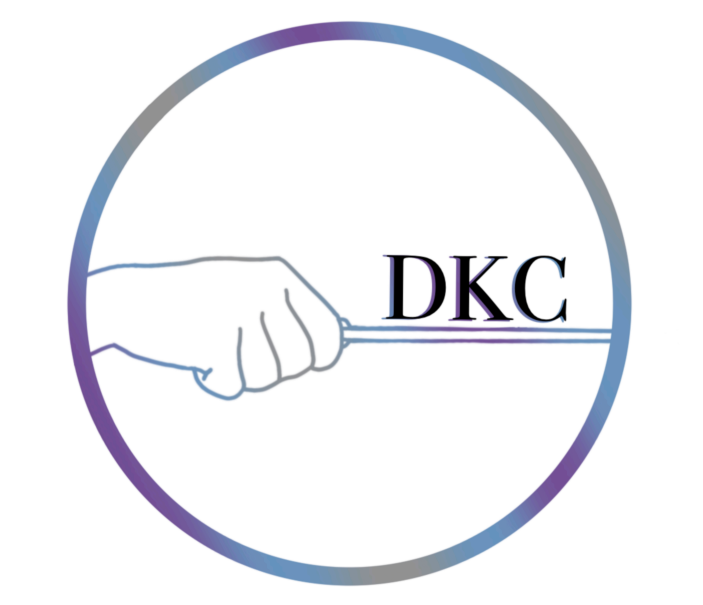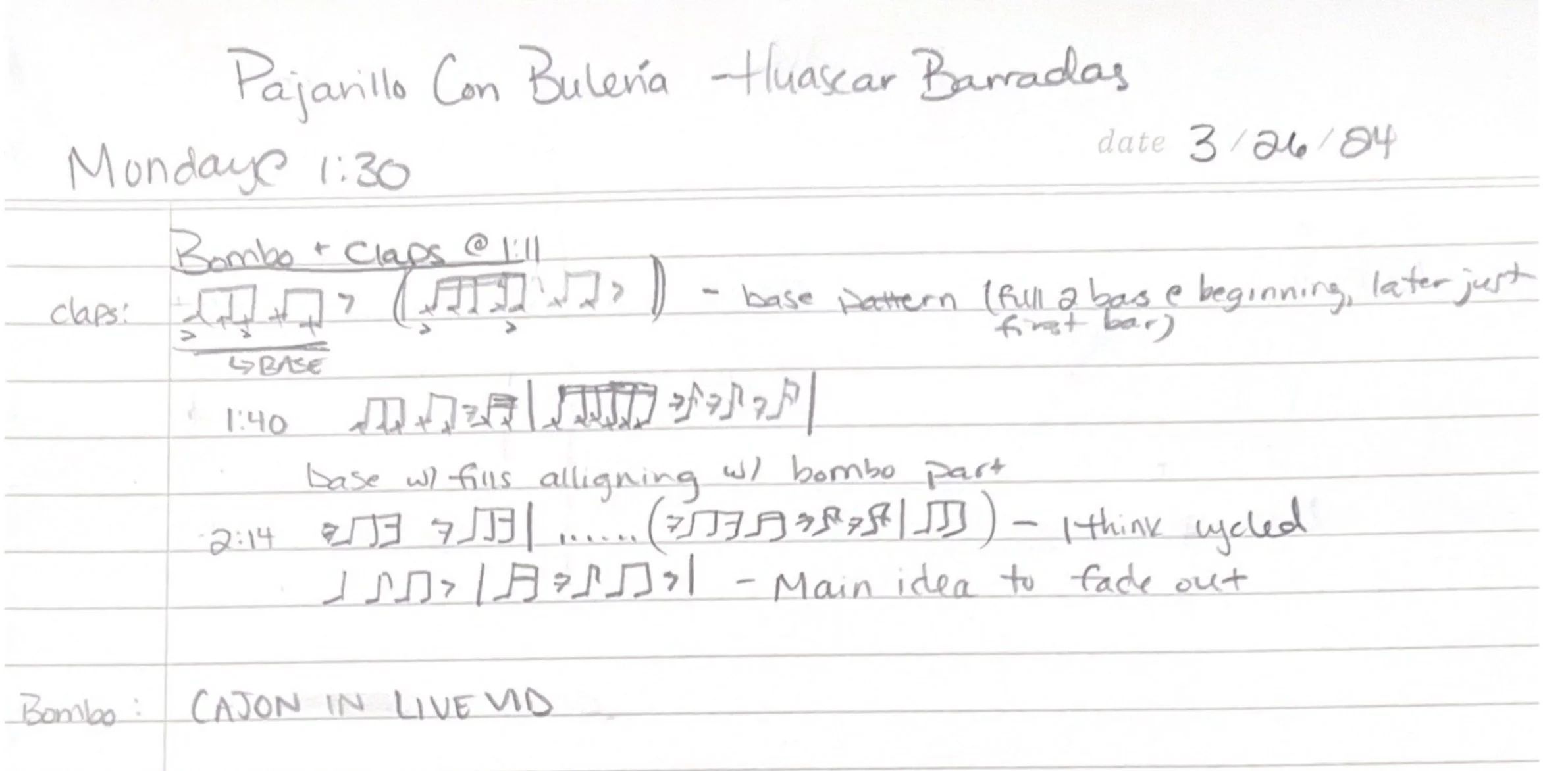Transcription Project - Post #5
Project Overview
In the pursuit of finding exciting music to program on my recital this semester, I gave myself the challenge of transcribing Huascar Barradas’ Pajarillo con Bulería and arranging it for flute and percussion. It is a piece that I have been captivated with since my first time listening to it and no such recreation exists as far as I could find. After four weeks of listening to the recording at half or quarter speed, playing along, and writing it down to the best of my ability, I finally finished the flute part. I quickly realized, though, that the greatest difficulty for me would be making sense of the percussion and generating that half of the arrangement.
At the 2023 National Flute Association Convention, I first heard Holly Hofmann perform alongside Louis Nash, cementing my admiration for the musical medium of flute and percussion. I set myself the goal of finding opportunities to combine my passion for flute with my love of percussion and Barradas’ piece gave me that chance. However, my limited knowledge of Latin American percussion slowed down my pursuit of authenticity and I called upon a couple of my colleagues to fill in the gaps.
Deciphering the Instrumentation
To sort out what was played on the initial recording, I got the help of my friend and fellow musician Griffin Law (Check out his website, he’s great!). He had the idea to listen to the recording on stereo speakers in order to isolate the instrumentation. He determined that the first half of the piece utilizes a rhythmic clapping figure performed by two people and a Bombo (a Latin American bass drum) performed by a third. The Bombo’s uniquely deep sound is what I love so much about the introduction and it was very cool to learn what the instrument was called. In the second half, he tracked a change in instrumentation for all three players, with the Bombo moving to a full drum set, one clapper switching to maracas, and the third playing on a timbale setup with two timbales, a plastic block, a cowbell, and cymbals.
This added a new element into my plan. I had already considered the possibility of my collaborative percussionist moving from a single drum in the first half to a drum set in the second half, but I did not realize that what I would end up arranging would be a condensed version of three overlapping parts. To assist in ironing out the finer elements of the reduction, I turned to my collaborative musician Katelynn Ward.
Katelynn and I after our first project meeting
Putting it Together
Katelynn is a terrific percussionist with a ton of experience performing various styles of music. She consulted not only the recording from which I developed my transcription but also a live recording of Barradas performing the piece with his band. This helped her to determine the instrumentation as well as the metric figures that are used throughout the song. To create a stripped-back version playable by one percussionist, she suggested a unique drum kit be developed to suit our needs.
First, for the Bombo and clapping section at the beginning, she suggested a muted kick drum and a high hat. The muted kick drum could emulate the sound of the Bombo while the high hat resembles the aural impact of the clapping figures. As the music picks up, the addition of maracas and the use of a Cajon would expand the percussive elements available to her at a given time, effectively delivering a versatile range of sounds to match the character of each section. This tailored drum kit would allow her to, after internalizing the groove of the piece, choose her own instrumental approach in a way that responds to my playing and calls to the improvisatory nature of the original recordings.
An insight into Katelynn’s method for taking apart rhythmic figures and assigning them to different instruments
Reflection
These past couple of weeks have been both exciting and humbling. While I do consider myself a percussionist, my background is in European symphonic percussion and American marching percussion, neither of which have served me much in this project. I have enjoyed the opportunity to find points of understanding in my conversations with Katelynn and Griffin as they’ve guided me through this musical language. I am thrilled to begin working with Katelynn on the performance and to add this work and the learning it has inspired to my own identity as a musician.



